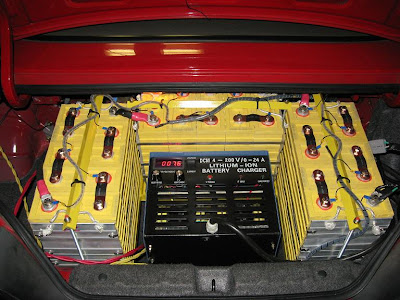Sorry no video or pictures this time but they are coming! I actually had a few errands to run last night when I got home from work so I took the EV out to put some time on the batteries and get those broke in but mostly just to learn more about the nature of the car. I was
surprised when I returned home and had put 6.5 miles on just driving around my little town.
I'm learning the torque curves a lot better now and this thing can really
accelerate if you shift right. I'm becoming more impressed with the performance as the driver gets better.
I was having trouble figuring out the remaining capacity on the
BMS system and after talking with Elite it turns out I need to do some rewiring. Apparently this system also tracks the current being charged into the cells and my wiring design didn't take this into account so add that to the list of remaining items.
Still to do:
- Put my front bumper back on.
- Finish wiring the
BMS system inside the car. It's just sitting there on the console and needs to be mounted. Turns out there is also no way to turn the power off to the
BMS computer or the
BMS monitor so I will be installing two switches. The monitor only needs to be on if you want to see the output (driving). The computer needs to be on while driving or charging but you could turn it off otherwise.
- Build covers for the cells so they are not completely exposed and a potential hazard.
- Finish the electronics and wiring for the heater.
- Setup DC/DC converter to switch on only when ignition is on.
- Fabricate the
serpentine pulley for the AC and get that all mounted up.
- Add a protective shroud under the motor. It's a pretty clear shot between it and the ground right now so preventing anything from bouncing / spraying directly onto or into the motor would be a good idea.
-
DMV registration
Probably some other little details I'm forgetting but that's the schedule for the time being.
I'll be trying to do a video with a quick walk through of the car and components with an inside drive this weekend if time permits.

































